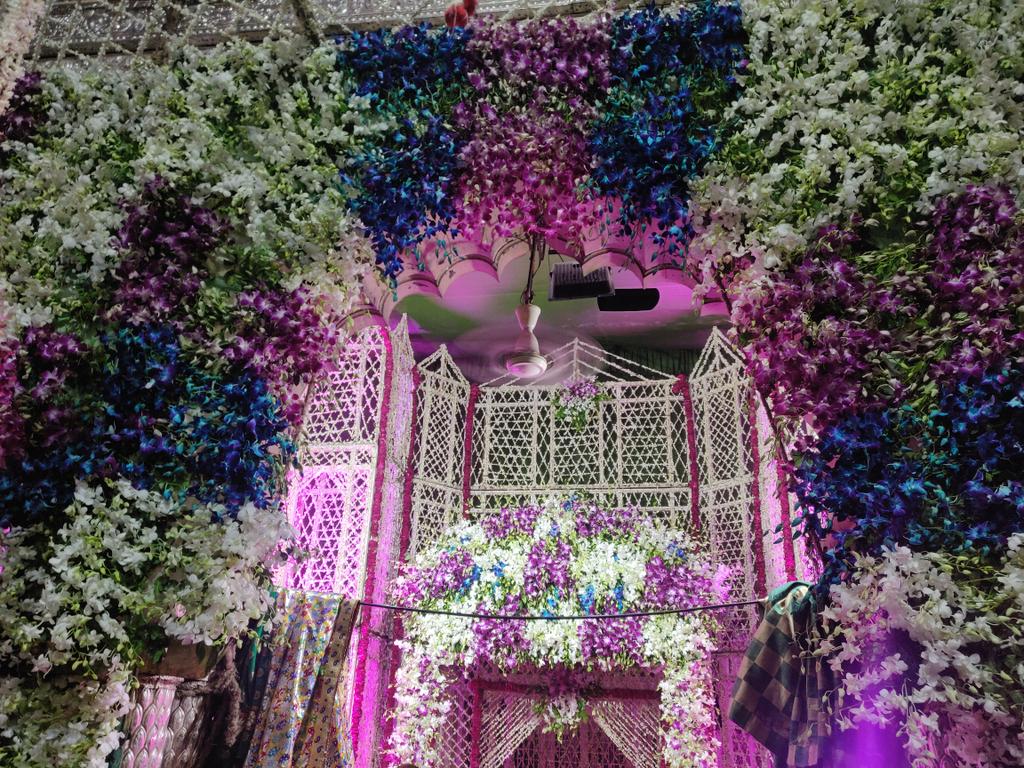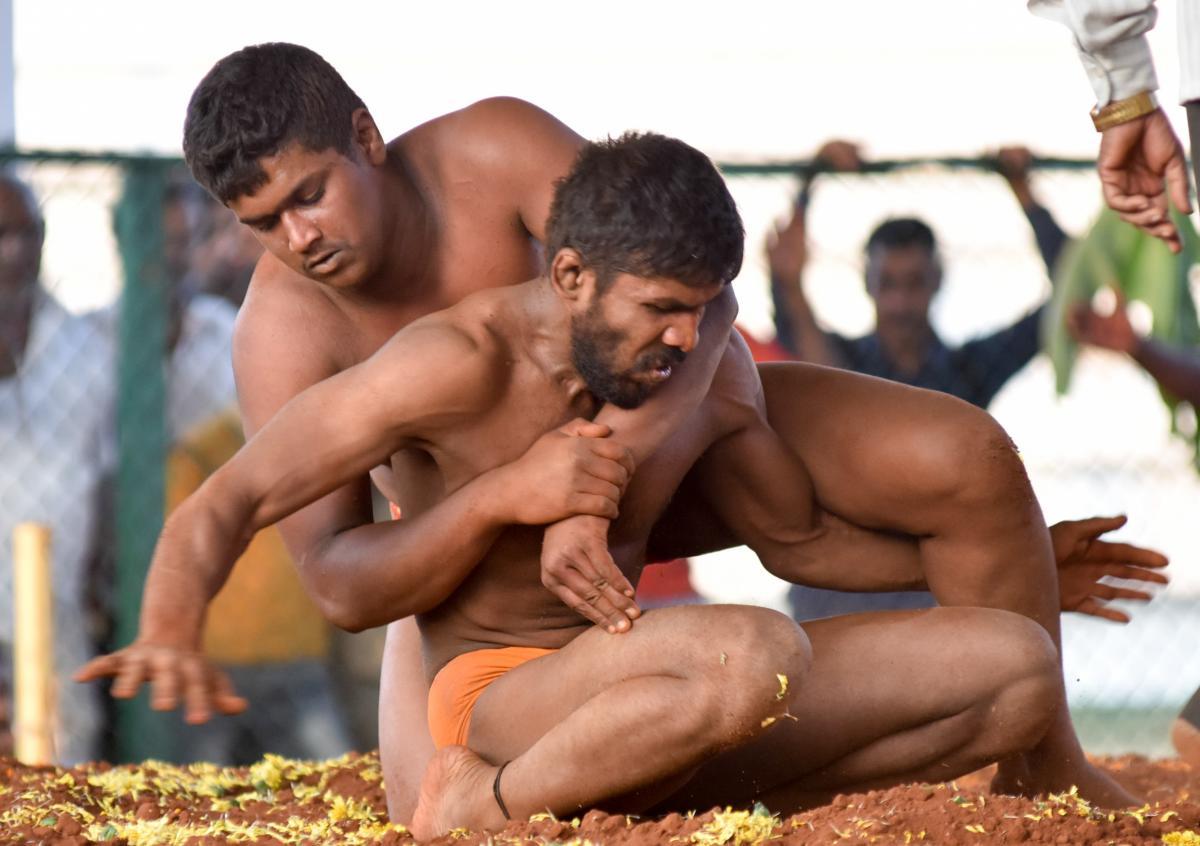As the land of gardens, groves and forests, artificially constructed ‘Phool Banglas’ were once not needed in Braj. – By Ashee Sharma
2024.05.18 (Vrindavan Today News): Vrindavan is the land of ever-flowing bliss where devotees always find new ways and reasons to serve their aaradhya Krishna. Every occasion and every season is therefore a celebration, even the sweltering summer when the mercury touches 47 degrees Celcius in Shri Dham!
After enjoying the soothing sandalwood seva during ‘Chandan Yatra’, the Lordships of Braj revel in the scented and cool breeze from grand flower mansions called ‘Phool Banglas’. Intricately designed with fragrant and ‘sattvik’ flowers, leaves and plant material, these colossal ‘Banglas’ are an important part of Thakurji’s summer service.
TIMELESS ORIGINS
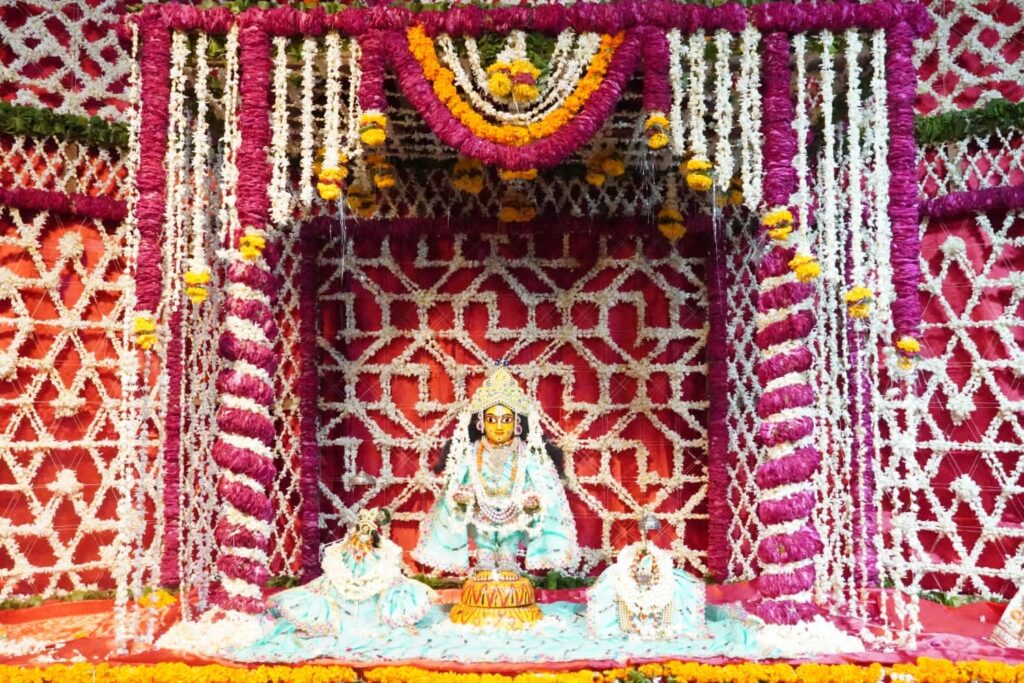
While the tradition of ‘Phool Bangla’ was instituted during the middle ages, the seva, says Acharya Shrivatsa Goswamiji of Shri Radharaman temple, began with the Gopis whose lilas with Krishna are eternal. Absorbed in his thoughts, the Gopis stealthily leave their homes to meet him in the secret kunj-nikunjs (bowers) of Vrindavan. Picking up all fragrant flowers on the way to the groves, they use them to adorn the divine couple and the swing or ‘dol’ on which they frolic.
“Seva is dear to Krishna. Gopis do everything for the pleasure of priya-priyatam, and we imitate them to taste a few drops from this endless nectar of devotion,” says Acharyaji.
Elaborating further Raja Goswami of Gopinath Temple adds, “The concept of ‘Phool Banglas’ as such is new to Vrindavan. It is a modern-day nomenclature for ‘Phool Dol’ that was observed by the Gopis as part of seva.”
Before the British imposed taxes on places of worship and leased out their property, all temples in Vrindavan used to have their own gardens where the ‘Phool Dol’ was organised. For instance, there was Gopinath Bagh for Gopinath, Govind Bagh for Govind Dev and Hanuman Bagh for Madan Mohan. The ratio of gardens to human settlements being 70-30, there was never a need for artificially constructed ‘Phool Bangla’ in Vrindavan. Flowers used for decorating the swings came from these sprawling, lush gardens where the ‘utsava vigrahas’ arrived in grand palanquins to play ‘Dol’ on the day of ‘Phool Dol’ or ‘Kamada Ekadashi’.
LABOUR OF LOVE
Given the challenges posed by contemporary ideologies and existential demands, the guardians of Braj-Vrindavan and its culture are faced with the tough task of maintaining the delicate balance between tradition and modernity.
Award-winning Phool Bangla artist Shri Jugal Kishor Sharma tells us that five generations of his family have been at the service of Shri Radharaman Lal. The journey began with his great grandfather Pandit Moolchand Mukut Wale, approximately 125 years ago.

Acharya Shrivatsa Goswamiji of Radharaman Mandir has been instrumental in taking their craft to the world through his kathas. It has been an association of nearly forty years. “For service in the temple and Maharajji’s kathas we use only auspicious, traditional, and environment-friendly material. You will not find cloth, balloons and artificial flowers etc. in our ‘Phool Banglas’. All work is original and done with hands, without using any molds or set patterns,” says Sharma.
While the amount of material, time and effort it takes to build a ‘Phool Bangla’ varies depending on the size of the temple and the kind of material as well as work involved, giving us an idea of what goes into its making Sharma shares, “for a typical ‘Phool Bangla’ in Shri Radharaman Mandir we need as much as 25-30 Kgs of flowers and 10-15 Banana stems. It takes anywhere between 8 to 10 hours and a dozen artists to make one Bangla.”
Villages on the outskirts of Braj produce enough raw material to meet the local requirement. Flowers obtained from farmers go through an intermediate step where they are strung into plain ‘malas’ (garlands) before the Bangla makers can purchase and further work on them. ‘Bela’ is the most commonly used flower in ‘Phool Banglas’. Motifs and designs such as ‘Swastika’, and six or eight corner lattices are popular. Jugal Kishor’s family specialises in the banana stem art which delivers finished pieces that shine like carved ivory or marble. Depending on their budget, temples go for Banglas ranging from 15-50000 each.
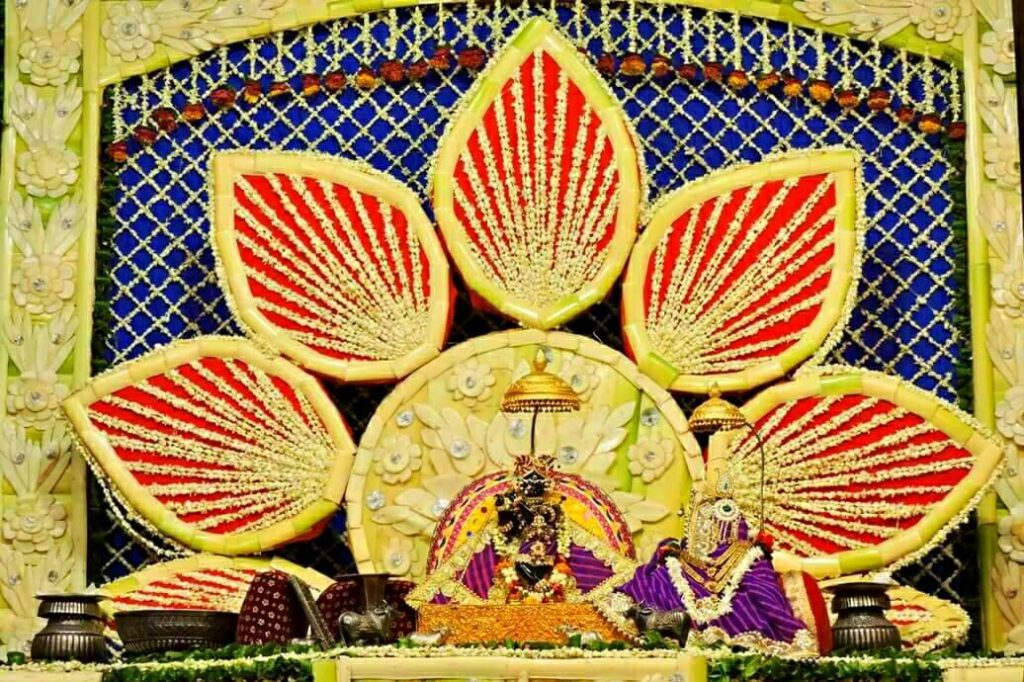
Besides these grand mansions, flowers are also used for making Thakurji’s minimal summer attire consisting of odhani (stole) and pyjamas and his ornaments. The ‘Banglas’ are in fact an extension of his ‘shringaar’. The tradition is carried over to the winter season with fruit and/or vegetable, pulses and dry fruit ‘Banglas’.
Although times have changed, Jugal Kishor’s family as well as his extended family of artists practice the art of making ‘Phool Banglas’ as Thakurji’s seva. Commenting on the changes that he has witnessed over the years, he notes, “What began as a small enclosure of wooden carvings and flower lattices for the deity has transformed into decoration spanning the entire temple premises today. Earlier the seva was limited to the ‘Jagmohan’ (balcony-like area for the deity) where Thakurji sat. The Goswamis’ and our families used to sit for hours, sometimes all day long, to make the ‘Bangla’. Now we have around 80-100 workers, though the seva bhaav has kept us bonded like family.”
On the brighter side, the impact of professionalism has been positive. While most traditional Indian crafts are struggling to survive, the art of making ‘Phool Bangla’ is showing encouraging signs. “It’s true that people are mainly motivated by seva bhaav and devotion, but there are many youngsters who want to take this up as a profession that is financially rewarding and sustainable. ‘Phool Bangla’ is one of the few arts that can bring fame, money and spiritual satisfaction at the same time,” says Sharma.
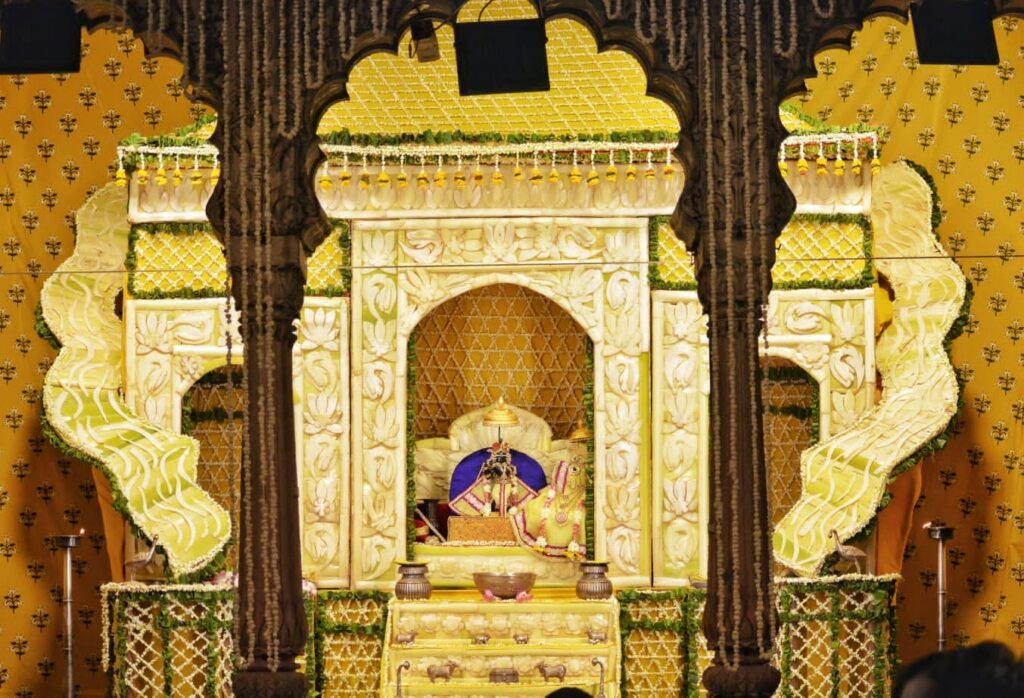
GOING OVERBOARD
According to Raja Goswami, the tradition of ‘Phool Bangla’ was initially propagated by Rajasthani Jains during the medieval ages. When Shrinathji moved to the prosperous state of Rajasthan, wealthy Jains wanted to worship him with valuables. But Shriji’s heart longed for the fragrance of Braj. The predicament was overcome with ‘Phool Banglas’ which could preserve the ‘madhurya’ (sweetness) of Braj/Govardhan alongside Marwaar’s ‘aishwarya’ (affluence).
While it may seem to be the case, Goswami is not against ‘aishwarya’ or the ‘Phool Bangla’ tradition as it is observed today. He is a bit of a purist though. For him not observing ‘Phool Dol’ is a ‘seva aparadh’ (offence committed while serving the deity), but ‘Phool Bangla’ is optional because it is not validated by scriptures.
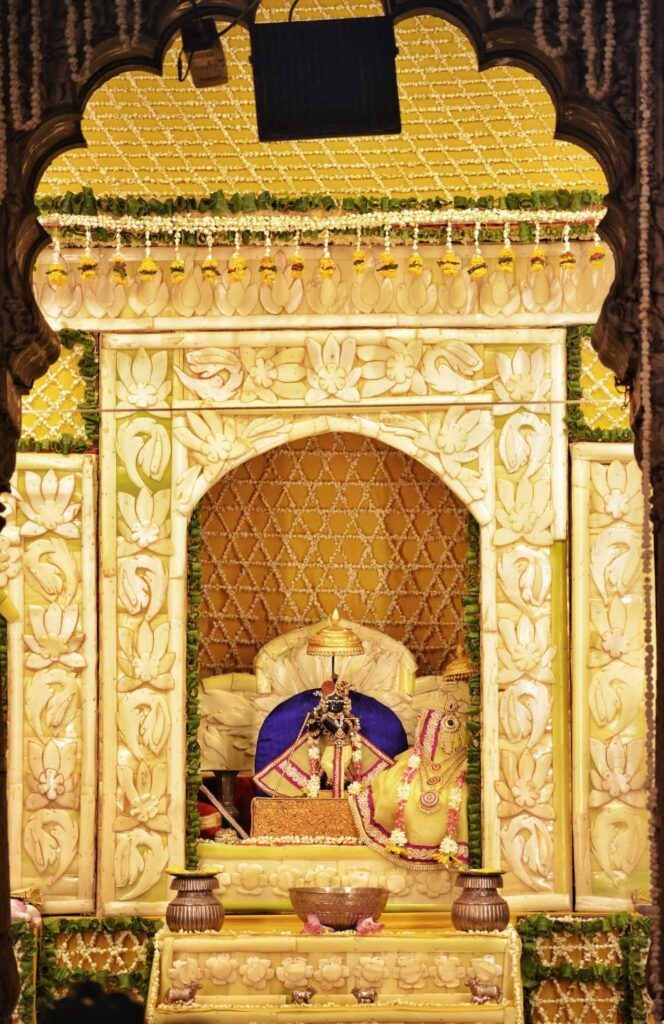
Goswami worries that the commercialisation of the lila will dilute the ‘Rasa’ and joy emanating from it. “Krishna is like the cloud which takes water from the oceans and gives it back in the form of rain. His lilas are the source of ‘Rasa’ for him as well as for us. Our pleasure should reside in giving pleasure to him, not in pleasing our senses and egos. In order to experience something, as mortals, we need an object for the senses to interact with. It was only for this reason that such traditions were established by the great Goswamis and Vaisnavacharyas. Unfortunately, we have forgotten their essence, and are running after opulence alone,” laments Goswami
Among the three types of sevas, ‘Shringaar’ (decorating the deity), is subsequent to ‘Bhog’ (offering delicacies) and ‘Raag’ (expression of feelings mainly through various arts). Within ‘Shringaar’, ‘Rasa’ is more important than ‘Padarth’ (object), but the equation seems to have been reversed today. Instead of relishing the devotional mellows, we are enjoying the object.
“The bliss of union is derived from separation. ‘Phool Dol’ is dear to Thakur, but did he say that he wants it every day?,” questions Goswami.
(This article was first published in June 2022 edition of ‘Vrindavan Today’ monthly magazine)



